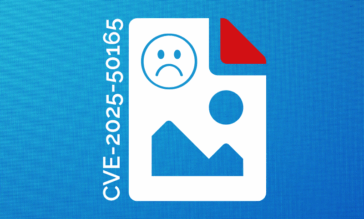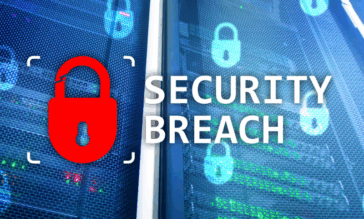Don’t Sleep on Cybersecurity: Why Old Solutions Fail Modern Businesses

Just like the jarring sound of an alarm we choose to ignore by hitting the snooze button, many IT professionals today are doing the same with their data security. In our personal lives, hitting snooze has seemingly minor consequences that can usually be overcome with a little hustle. However, hitting snooze can also ensure that we wake up in a rush, blast through our daily routine, and increase the risk of making serious mistakes as we try to make up for lost time.
The same can be said for hitting the metaphorical snooze button on data security.
With enough alerts and lack of support, security teams are likely to hit snooze when maintaining or updating data security technologies. While they’re not deliberately trying to be less secure, other initiatives often take the forefront. And as long as there is no incident, security is deemed adequate. However, much like hitting the physical alarm, more is happening behind the scenes. Your data security is fine until it isn’t; threats continue to evolve, and data continues to be exposed as new technologies, such as the cloud and AI, are integrated into operations.
Ignoring the call to modernize security measures can lock organizations into a costly and reactive cycle, leaving them perpetually one step behind emerging threats. This feet-dragging exposes private data to increasing risks and squanders resources that could otherwise drive innovation. By clinging to legacy systems, businesses risk substantial financial and reputational damage and miss out on the strategic advantages of advanced security technologies.
Why Legacy Security Approaches Are No Longer Effective
Clinging to legacy security measures is akin to relying on floppy disks in an era dominated by cloud computing—a stark reminder of how outdated practices can leave significant gaps in data protection. As technology advances, the techniques and strategies employed by cybercriminals have similarly progressed, creating a mismatch between old security paradigms and new threats. Here, we’ll explore why these traditional data security methods no longer suffice.
Cyber Defense is a 24/7 Job
Hackers are an ever-present threat. Their ability to exploit systems is well-documented, with numerous recent data breaches serving as a testament. These incidents typically follow a familiar pattern: find a weak link in outdated security protocols and leverage it to gain unauthorized access. Whether exploiting unpatched systems or hijacking weak passwords, the playbook constantly evolves, staying one step ahead of conventional security measures.
Tech Evolution Isn’t Slowing Down
The technological landscape constantly changes, with innovations like the cloud, Internet of Things (IoT), and artificial intelligence (AI) reshaping how businesses operate. Unfortunately, traditional security tools were not designed to handle the complexity and scale of these modern technologies. They often lack the agility to adapt to new environments or to scale dynamically with the expanding networks and data they were designed to protect. This mismatch exposes organizations to heightened risks and hampers their ability to leverage these technologies to their full potential.
High Costs for Low Results
Sticking to outdated security systems can have severe financial implications. As IT budgets are drained by the constant need to patch and manage vulnerable legacy systems, less capital is available for investments in innovations that could drive business growth. Moreover, the financial burden of a data breach—ranging from regulatory fines to reputational damage—can far exceed the costs of modernizing security infrastructure. This creates a compelling economic argument for transitioning away from legacy practices, underscoring the fact that modern security is not an expense but a crucial investment in future-proofing an organization.
The Illusion of Security: How Antiquated Paradigms Fail
Relying on antiquated security paradigms like traditional firewalls and antivirus programs often gives organizations a false sense of safety. While foundational, these older methods are no longer sufficient to protect against today’s sophisticated cyber threats. This misconception can lull businesses into dangerous complacency, constantly hitting the snooze button on their security and ignoring the urgency to update their strategies.
Many organizations hesitate to make necessary data security upgrades due to:
- The comfort and familiarity of existing systems
- Perceived cost implications
- An underestimation of emerging threats
- Lack of adequate staff training
- Assumed complexity of new technology
Independently or taken all together, these are comfort zone traps that can be costly.
Recent attacks, such as the Snowflake breach, completely circumvented these legacy technologies. Attackers compromised a user’s credentials, allowing them access that made them look like legitimate users. A better firewall or other legacy security device would not have stopped this access.
Embracing Modern Security: What Does It Look Like?
Traditional defenses are being outstripped by more sophisticated threats, prompting a necessary paradigm shift toward modern security practices.
Adopting Zero-Trust solutions revolutionizes outdated perimeter-based security models with a simple, potent mantra: “Never trust, always verify.”
This approach necessitates rigorous identity verification for every individual and device attempting to access resources on a private network, regardless of whether they are inside or outside the network’s perimeter.
Complementing this shift is the rise of AI and automation in security systems. These AI-driven tools are faster and more adept at identifying and neutralizing threats than traditional methods. By continuously learning and adapting, AI security systems can anticipate threats before they manifest, offering a proactive—rather than reactive–approach to cybersecurity.
Moreover, the focus has increasingly shifted towards the necessity of data-centric security strategies such as Data Detection and Response (DDR). DDR methods include technologies to detect sensitive data in motion and apply protection such as masking to ensure that it remains secure as it traverses boundaries such as email, cloud storage, and collaborative tools—not just the perimeters of the network.
The IT Budget Dilemma: Investing in the Right Places
One of the major issues with implementing new technologies is navigating the complexities of IT budgeting. Many organizations continue to pour substantial resources into maintaining legacy systems. While these systems may feel comfortable due to their familiarity, they often demand frequent and costly updates that offer diminishing returns on investment. The financial drain of patching outdated technology underscores a crucial budget misallocation, where funds could catalyze transformative growth and security enhancement instead.
A wise investment in modern security solutions, like DDR, has become a necessary evolution to stay ahead of sophisticated cyber threats. Embracing technologies such as cloud-based security, advanced endpoint protection, and automated threat detection systems can dramatically improve an organization’s security posture while offering better scalability and efficiency.
Modern cybersecurity technologies should be designed to:
- Integrate seamlessly with existing tech stacks
- Reduce false alerts that can overload security teams
- Reduce workforce costs associated with manual monitoring
- Tackle data security from more than a malware standpoint
- And provide superior analytics for informed decision-making
Organizations should comprehensively audit their current security infrastructure to reallocate IT budgets wisely to identify redundancies and inefficiencies. It is crucial to prioritize investments that offer long-term security benefits. This might include shifting funds towards regular staff training on the latest security practices, investing in AI-driven security tools that reduce future spending on breach mitigation, or adopting a Zero Trust architecture that secures all access points across the network.
By strategically directing funds towards these smart investments, companies can ensure they are protecting their current assets and laying a solid foundation for future security challenges.
The Role of CISOs and IT Teams: Leading the Change
Chief Information Security Officers (CISOs) and IT teams’ roles are pivotal in managing security and actively leading transformative change within organizations. These professionals are not just data guardians but change agents who must drive the evolution from outdated practices to advanced, robust security frameworks. After all, the “way it’s always been done” continues to make headlines for the worst kind of reasons—data breaches. Security experts on the frontlines know that things must change.
To do so effectively, cybersecurity leaders must foster a culture of continuous improvement and proactive risk management. This involves conducting thorough risk assessments to identify vulnerabilities and making compelling business cases demonstrating the benefits of modern security measures and potential return on investment to the mainly non-technical decision-makers in the C-suite.
The push for enhanced data security must transcend the boundaries of the IT department and become a cross-departmental endeavor. Collaboration is key. CISOs and IT teams should actively engage with stakeholders from various parts of the organization, including finance, operations, and executive leadership, to ensure a holistic approach to cybersecurity. This collaborative effort broadens the understanding of cybersecurity challenges across the organization and integrates diverse perspectives into the digital strategy, thereby strengthening overall defense mechanisms.
The Future of Data Security is Here
It should come as no surprise that it’s time to stop hitting the snooze button and wake up to address the new era of data security. Organizations have evolved to embrace new technologies that enable their operations, and now they must do the same for their security.
The Votiro DDR Difference
Votiro’s Zero Trust Data Detection and Response platform can help your organization stop hitting snooze and refocus on the data. Votiro takes a Zero Trust approach to private data by intelligently and actively monitoring data flows in real-time. This method ensures that personally identifiable information (PII) is promptly identified and classified before and after it circulates within the organization. Through automated data management and protection protocols, DDR adheres to business and regulatory standards, effectively blocking unauthorized access and mitigating the risk of data breaches.
Votiro’s solution goes beyond traditional firewalls and legacy security measures, safeguarding data privacy by integrating technology to neutralize malicious threats that cross organizational boundaries. Votiro’s proprietary Content Disarm and Reconstruction (CDR) technology is foundational to data security, sitting alongside antivirus (AV) capabilities to proactively address known and emerging zero-day threats, enhancing both security and privacy.
Learn more about Votiro’s Zero Trust Data Detection and Response capabilities by signing up for a one-on-one demo of the platform. See how Votiro removes the snooze button on data security, allowing you to unify your IT strategy without adding unnecessary complexities or tool redundancies.
News you can use
Stay up-to-date on the latest industry news and get all the insights you need to navigate the cybersecurity world like a pro. It's as easy as using that form to the right. No catch. Just click, fill, subscribe, and sit back as the information comes to you.
Sign-up Here!
Subscribe to our newsletter for real-time insights about the cybersecurity industry.



